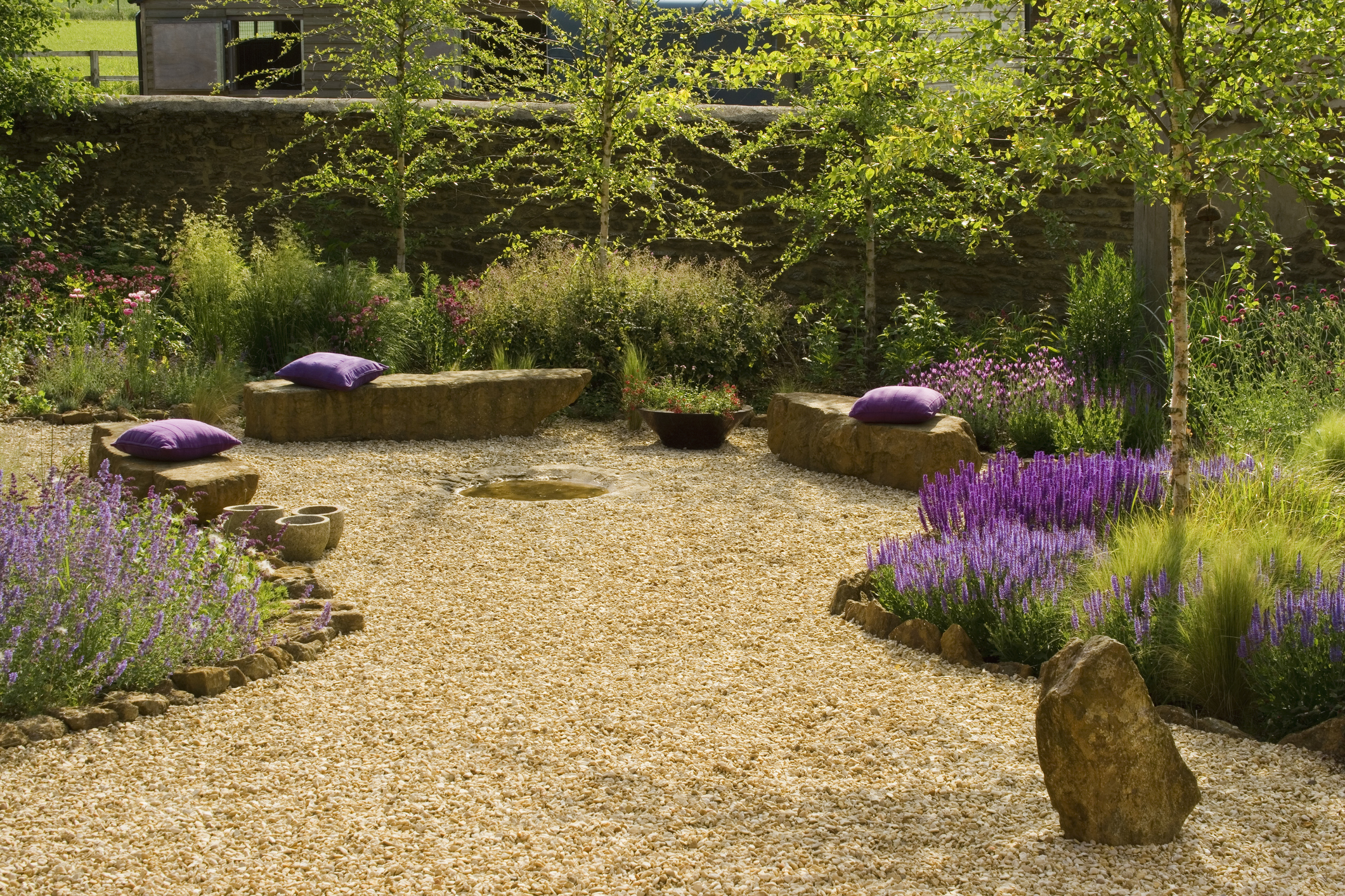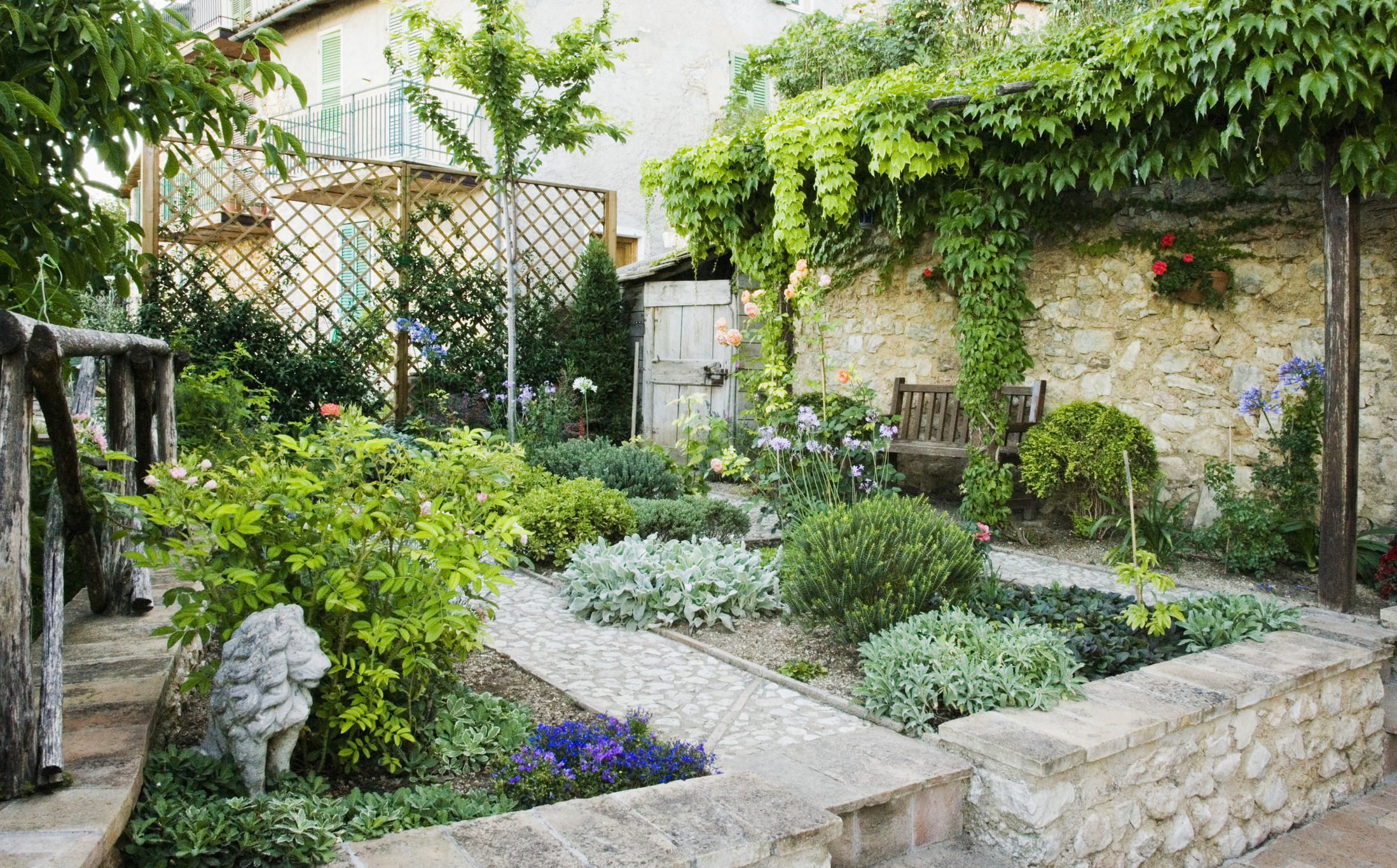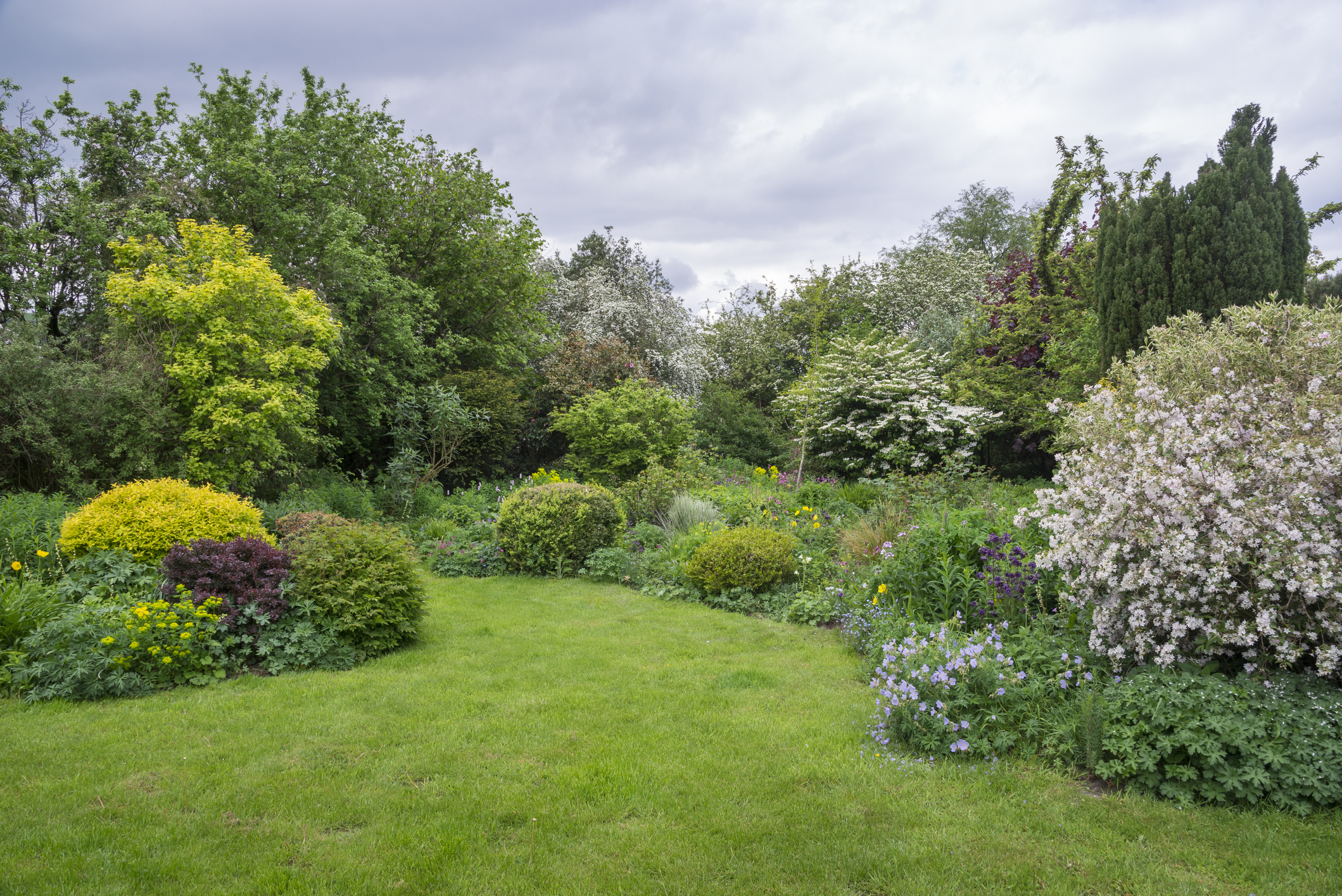10 Smart Landscaping Tips for When You're Building a New Home
It can be easy to overlook the garden when building a new home, but it can be beneficial to tackle both at the same time

Whether you are creating a home on a barren plot, or rebuilding in an established garden, there are benefits to landscaping while working on a brand new home. We share our top tips for getting the garden of your dreams to match your dream home
1. Reuse the spoil for landscaping
When you excavate your foundations, save the spoil to create features in your garden. Ask your groundworkers to put any clean topsoil in a separate pile for use later on. Doing this will also save you from the Landfill Tax imposed for dumping excavated soil and rock.
2. Plan large features in advance
If you want a pool or pond, try to get it excavated while you still have plant on site. This will save you from having to hire diggers again, and it is easier to get access to the rear of a site before the house has been completed.
3. Pick outdoor indoor paving
Another advantage of planning your garden scheme while you are working on the main build (rather than waiting until after) is that you can let your interior scheme dictate your exterior scheme and vice versa.
When choosing a floor for your living space, you might find it comes in a version suitable for outdoor use to create a seamless transition between your home and garden. You might also be eligible for discounts when making a large order from one supplier.
(MORE: Ways to Bring the Outside In)

4. Think about drainage
Covering your whole site in impermeable hard landscaping makes it much harder for water to drain away. It rains a lot in the UK, and the last thing you want is for your new home to flood because of landscaping choices you have made.
Lawns, borders and gravelled areas allow good drainage and there are a number of permeable versions of traditional hardscaping materials now on the market. Where possible, make the most of rainwater harvesting too — storing what falls for free from the sky is invaluable when we do have a dry spell and you have a garden to water.
5. Consider decking on sloping sites
People often terrace a sloping garden but this can prove expensive as it requires a lot of labour and excavation work. Using decking to create level surfaces on your site is a more cost effective alternative and is a great way to connect raised levels of the home to your garden.
6. Work out weather and sun exposure

Any landscaping scheme will need to be designed with site specifics in mind. If you can, spend a few weeks getting to know what your site is like at different times of day. Think about how you want to use your garden and designate areas for these different purposes. You might want a sunny spot for relaxing in the day, with a good shaded area to retreat to. In the evening, you will want an al fresco dining area that gets the last of the day’s sun.
It takes weeks to get planning, buying you a couple of months to look at the site at different times of year too. Again, see how the site is naturally sheltered or exposed, and pick appropriate plants for each space.
(MORE: Ways to Get Your Garden Summer Ready)
7. Use mature plants to create an established look
A brand new garden planted from bulb, seed and sapling will take a long time to reach maturity. Buying mature plants is expensive, but carefully selecting a few species to create privacy and height in your garden is essential. For instant screening, try bamboo or pleached trees (trained hedges with a trunk to lift the leafy part to eye level) which can be bought fully formed.
When it comes to planting flowers and shrubs, it is best to introduce new plants and build up your borders over time. This allows you to assess how various species are doing. Remember that most small plants will establish themselves within one or two seasons. You could even get a headstart by bringing plants on in tubs as the building work commences, ready to be planted out when landscaping begins.

8. Tackle lighting inside and out
A good garden lighting scheme improves security, enhances the look of your house and means you can enjoy your garden long after sunset. To save on labour, arrange for your electrician to tackle indoor and outdoor lighting at the same time. This will mean they can plan the wiring for your house and garden as a whole, rather than having to tack the garden on at a later date, which is so often the case. It also means you have someone keeping an eye out for potential overloading of the circuit.
9. Be your own garden designer
Some people hire the help of a professional garden designer, but if you want to save money – or enjoy a project – have a go at designing your own garden. Measure the area and mark out any mature plants that you wish to retain. Also make a note of sun and shade at different times of day. There are plenty of free design tools online (such as Google SketchUp) to help you create plans and 3D visualisations of your garden.
10. Don’t forget storage
Tools, lawn mowers, outdoor furniture and toys all need somewhere to live and for most of us, this is where the garden shed comes in. However, if you are building your home from scratch you have the opportunity to create this much-needed storage space as part of the home or garage. When designing your home, see if you can allocate a few square metres of garage space, or attach a lean-to style storeroom to your home for garden paraphernalia.
(MORE: Best Plastic Sheds)
Get the Homebuilding & Renovating Newsletter
Bring your dream home to life with expert advice, how to guides and design inspiration. Sign up for our newsletter and get two free tickets to a Homebuilding & Renovating Show near you.

